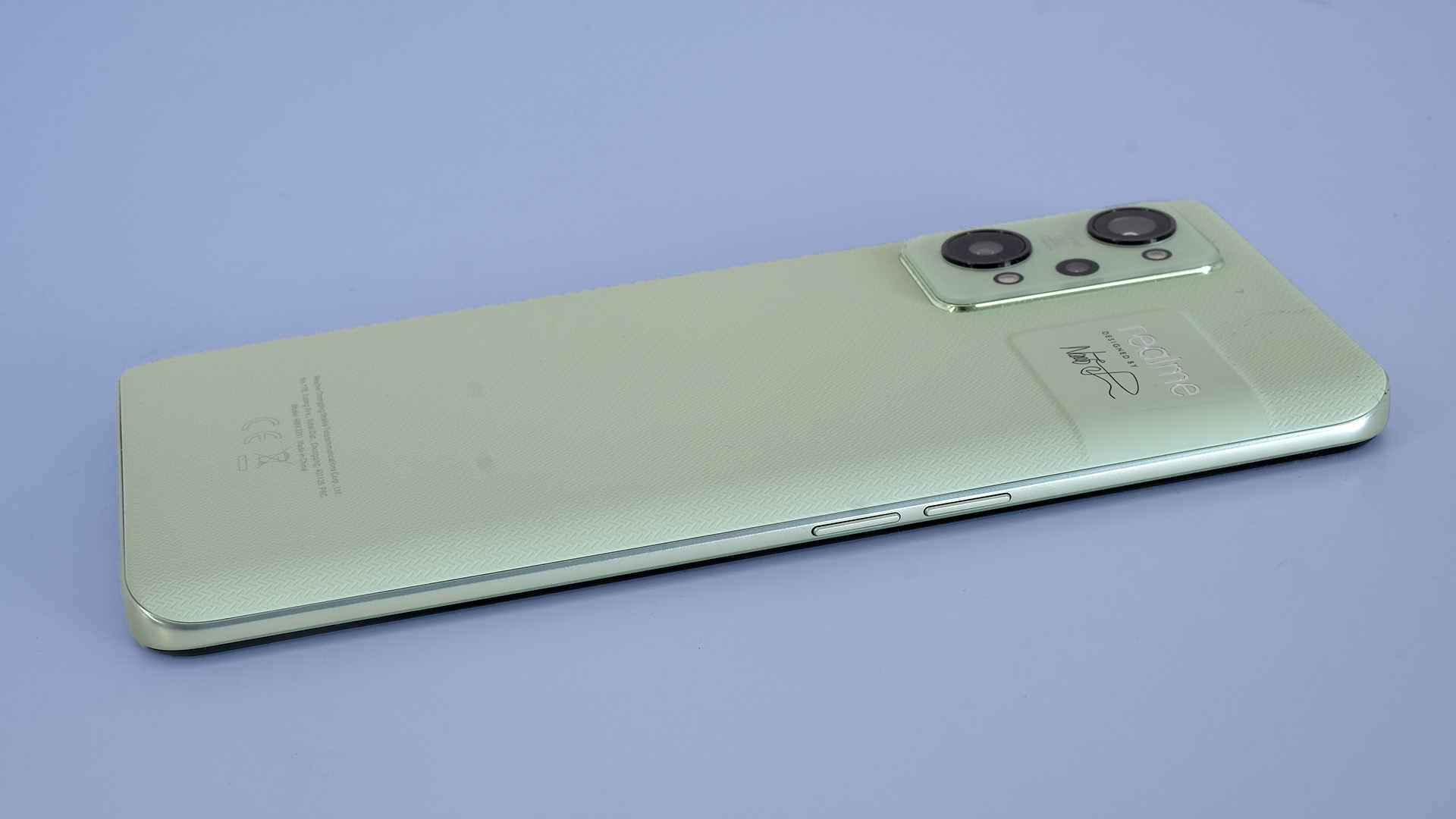TechRadar Verdict
Realme’s GT 2 delivers the goods for mid-range buyers, with a powerful processor, great primary camera and a surprisingly mature design. It’s just a shame the secondary cameras aren’t so impressive.
Pros
- +
Powerful processor
- +
Good value
- +
Very strong primary camera
Cons
- -
HDR Camera can be a little lax with highlight retention
- -
Weak secondary cameras
- -
Needs bug fixes and UI tweaks
Why you can trust TechRadar
Two-minute review
The Realme GT 2 is one of the best Android phones so far for people who want the flavor of a high-end $1000/£1000 phone for around half the price.
Three features mainly contribute to our assessment, and each of these key parts is genuinely impressive. First of all, the Realme GT 2 has a bright and vibrant 120Hz OLED screen.
Also impressive is the 50MP primary camera. This main camera uses the great Sony IMX766 sensor, also seen in the OnePlus 9 Pro and the Oppo Find X5 Pro, and delivers excellent image quality, day and night. And while the highlight retention doesn’t quite match that of the very best phones, its performance is still great, considering the GT 2’s mid-tier cost.
The Realme GT 2 also has a high-end processor. Sure, it’s Qualcomm’s flagship from 2021, but it still performs extremely well in 2022 - and will no doubt continue to do so for years to come.
This phone is emblematic of the appeal of Realme phones. They often deliver hardware better than the competition, and this typically outweighs whatever finesse the backend software may, slightly, lack.
Battery life is the main possible reason to give you pause. While the Realme GT 2’s 5,000mAh battery capacity is precisely what we’d hope for in a phone like this, its stamina in the 120Hz display mode is lower than some of the low-power phones we’ve recently tested, like the Xiaomi Redmi Note 11.
The Realme GT 2 is a phone you will likely need to charge every day. You may even, as we have on occasion, have to give it a top up before a night out. However, we are talking about stamina similar to that of some of last year’s phones with this chipset, like the OnePlus 9.
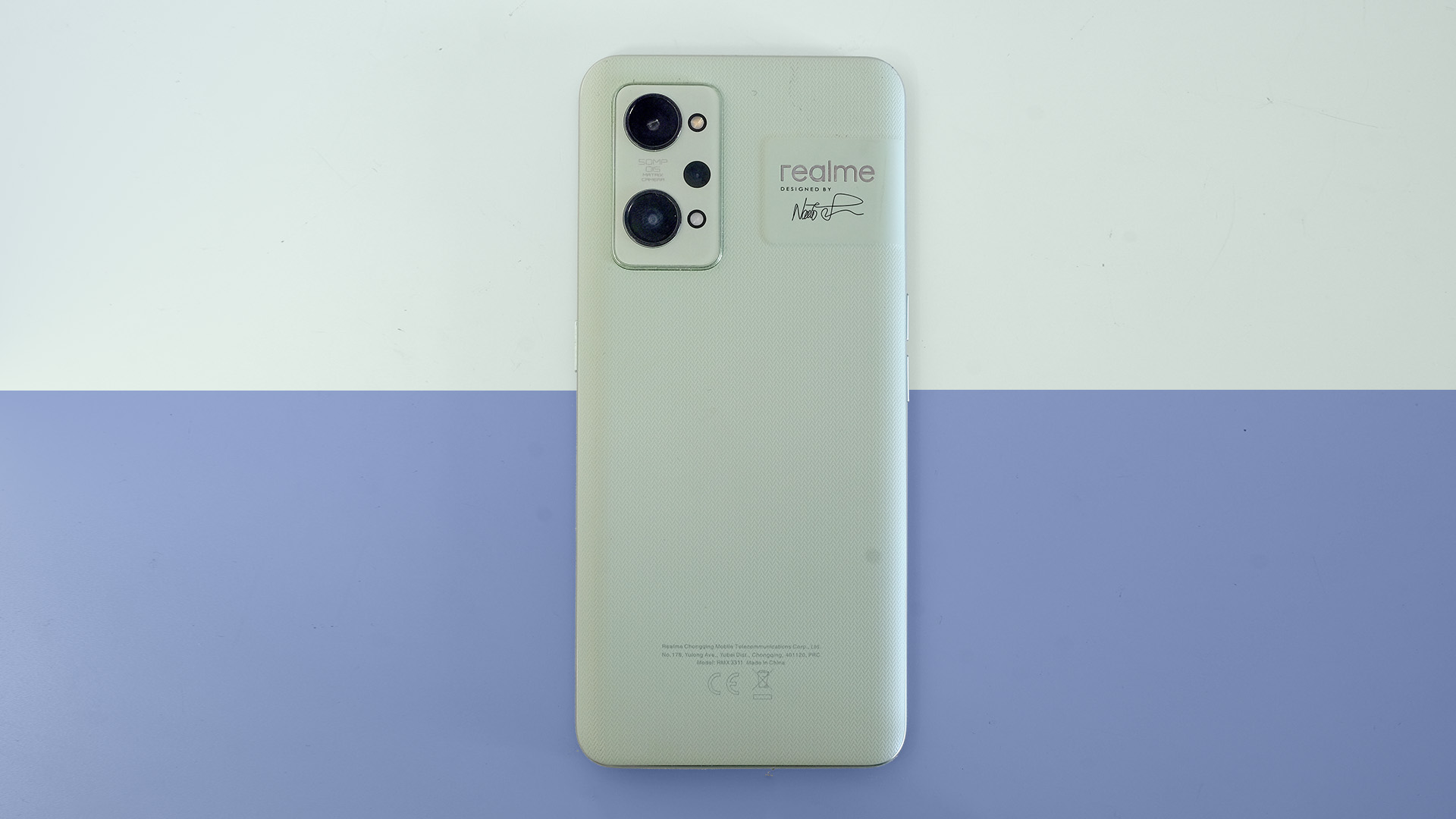
Realme GT 2 price and availability
- Starts at £499 (around $660, AU$885)
- Out now in the UK
- No US availability
The Realme GT 2 launched in China in January 2022, but only came to western markets in March. It’s part of a duo, made up of the Realme GT 2 and Realme GT 2 Pro.
This GT 2 phone starts at £499 (around $660, AU$885), making it £200 less than the Realme GT 2 Pro. It has a lower-resolution screen, a previous-generation processor and an inferior ultra-wide camera.
The £499 Realme GT 2 also has half the storage: 128GB, and 8GB of RAM. There is a step-up version with 256GB of storage and 12GB of RAM for £549 (around $725, AU$975).
The Realme GT 2 is out now in the UK, and is likely to land in Australia too though we don't have those details at the time of writing. It won't be sold in the US.
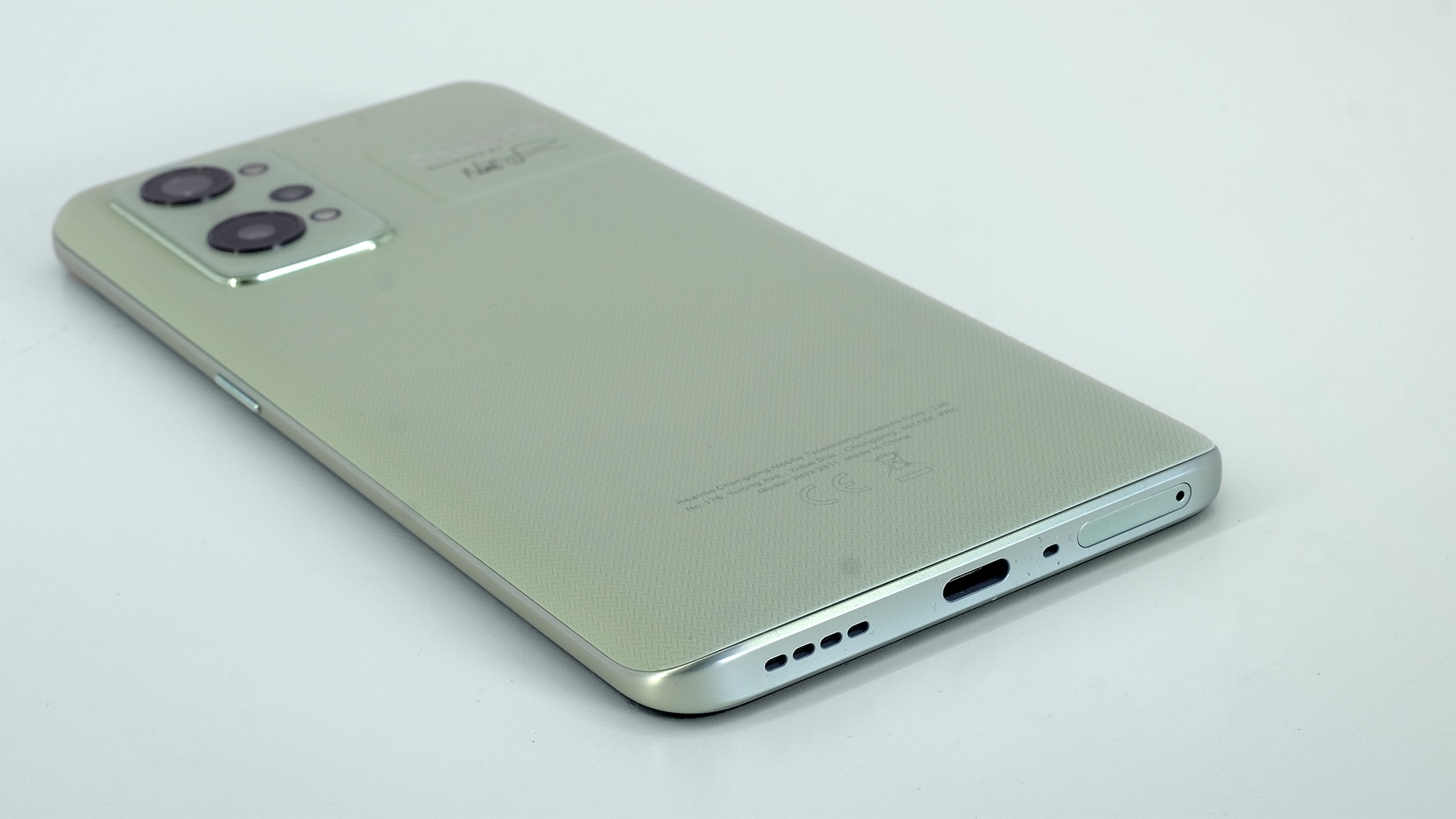
Design
- 'Paper-like' biopolymer backplate
- Glass also an option in the lower-spec Realme GT 2
- In-screen fingerprint scanner
Many Realme phones have outlandish designs intended to instantly grab your attention. Giant slogans printed across the back of some of its phones read like portable adverts for the company. By contrast, the Realme GT 2 is reserved. But it’s still, in traditional Realme fashion, anything but ordinary.
A smooth rectangle towards the top of the phone bears the signature of the rear panel’s designer, Naoto Fukasawa. Even if you choose to use the unusually nice, soft-touch bundled case, you won’t escape the signature, which makes a second appearance, in gloss print.
It’s another attention-grabber, but we’re pleased with how tasteful the Realme GT 2 seems as a whole.
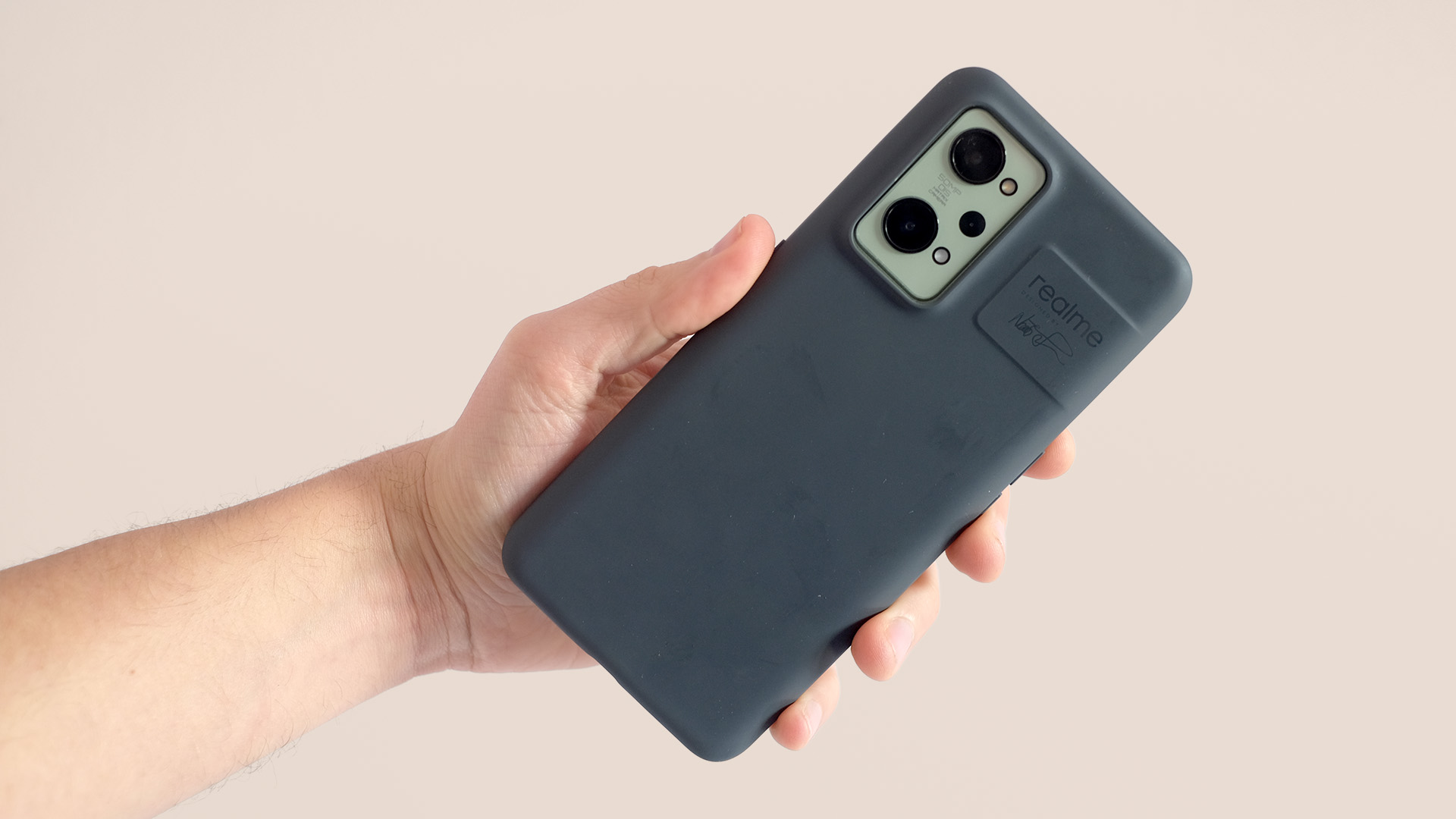
The Realme GT 2’s back is made of plastic, as well as its sides – but it is no normal plastic. Realme describes it as “derived from renewable resources such as paper pulp,” and calls it a “biopolymer”.
The company is clearly avoiding the term plastic, but Realme’s description suggests it’s a bioplastic with a cellulose component. According to the company, utilizing this bioplastic reduces carbon emissions in the manufacture of the back plate by “35.5%”; it should be noted that Realme doesn’t explicitly state what baseline was used to come up with that figure.
The rear plate has an embossed texture that both looks and feels pleasant, and the green shade of our review phone is lovely. In this color option, the designer’s signature detail does not seem so out of place. This is one of the better-looking phones Realme has made.
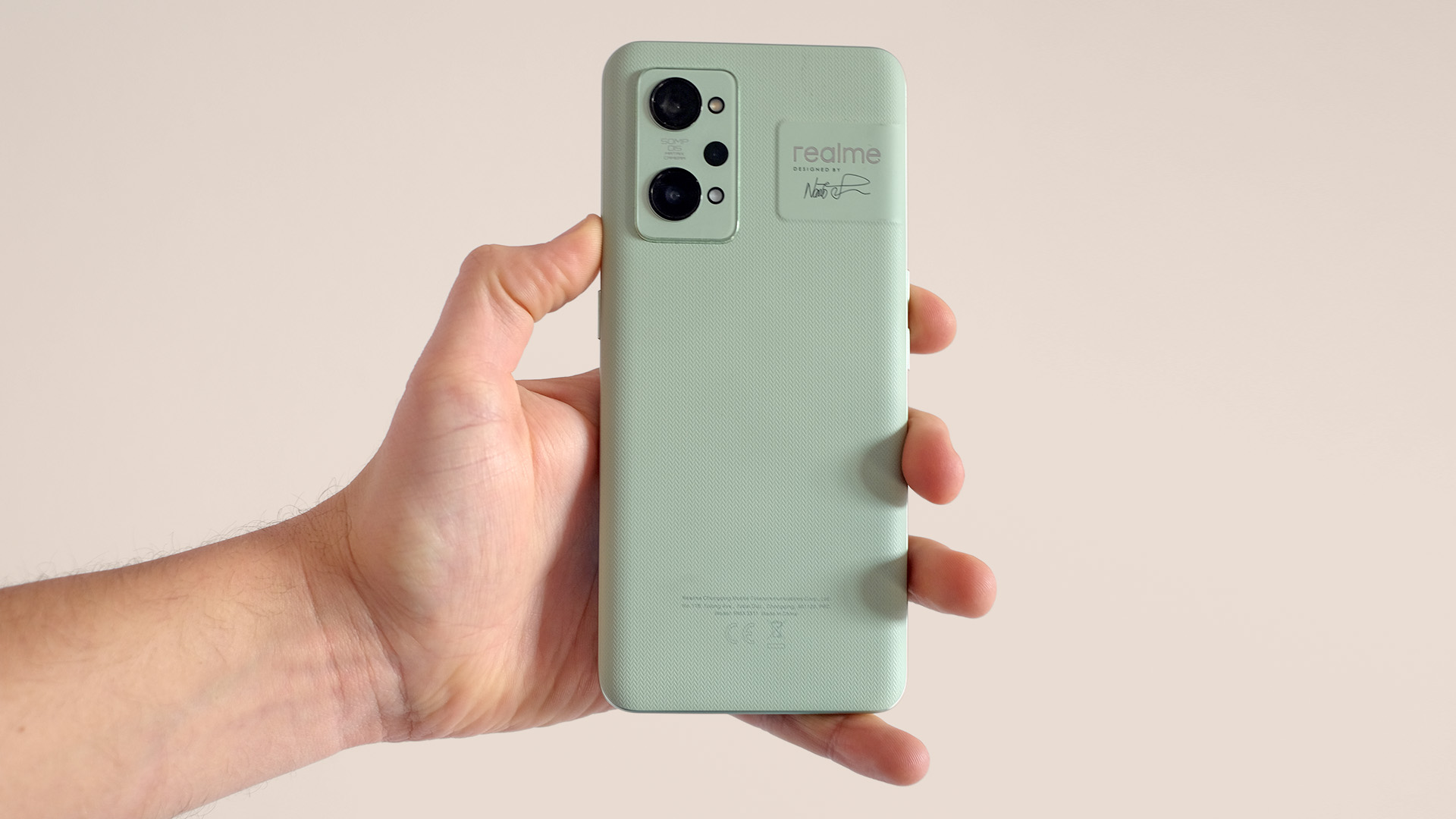
Not a fan? There’s a Steel Black GT 2 that appears to have a glass back, and this is the only finish available with the lower-spec 128GB storage and 8GB RAM. It also appears to lack the signature plate, should that be a turn-off. At launch, this was available for £399 in the UK - a steal. Its standard pricing is £499, and this is probably the version we’d buy.
All versions of the Realme GT 2 have an in-screen fingerprint scanner. The obvious route would be for Realme to use a cheaper side-loaded one, but it splurged.
This scanner is fast, and it worked every time during testing, but there is a drawback here. The Realme GT 2 does not “look” for your finger in standby mode, or when you touch the screen. You have to press the power button – then the unlock area within the display. As reliable as this fingerprint scanner is, one built into the side power button would be faster.
Dig into the settings menu and you can switch on “raise to wake” and “double tap to wake” modes, which improve matters, as they remove the need to press the power button. In our opinion, one of these should be switched on by default.
The phone has good stereo speakers, with one driver on the bottom and another above the display. The 6.6-inch screen is a good size for an enthusiast’s Android, which this phone is.
There’s not much to complain about when it comes to Realme GT 2’s outer hardware, but we do miss having a headphone jack.
Display
- Lacks the GT 2 Pro’s ultra-high-res panel
- Good color, but can misrepresent your photos
- Vibrant OLED display
The Realme GT 2’s screen shows the first key difference between this phone and the more expensive Realme GT 2 Pro. It is a 120Hz AMOLED display with a resolution of 2400 x 1080 pixels. The Pro version has a higher-resolution 1440p panel.
There’s a visible difference, of course, but the Realme GT 2 display is still sharp. It is also colorful, and you can choose exactly how colorful it gets.
The default “vivid” mode adheres to the wide color gamut DCI P3 standard. “Natural” offers something closer to sRGB, and the Pro mode lets you switch between DCI P3 and the OLED panel’s native gamut for even wilder color saturation. It also provides color temperature controls.
As ever, pick the one that looks best to your eyes. After a few days with Vivid, we switched to Natural. The only issue is the Photos app does not override this color calibration, so if you max out display color, all your Realme GT 2 photos will appear oversaturated until you actually look at them on a different display.
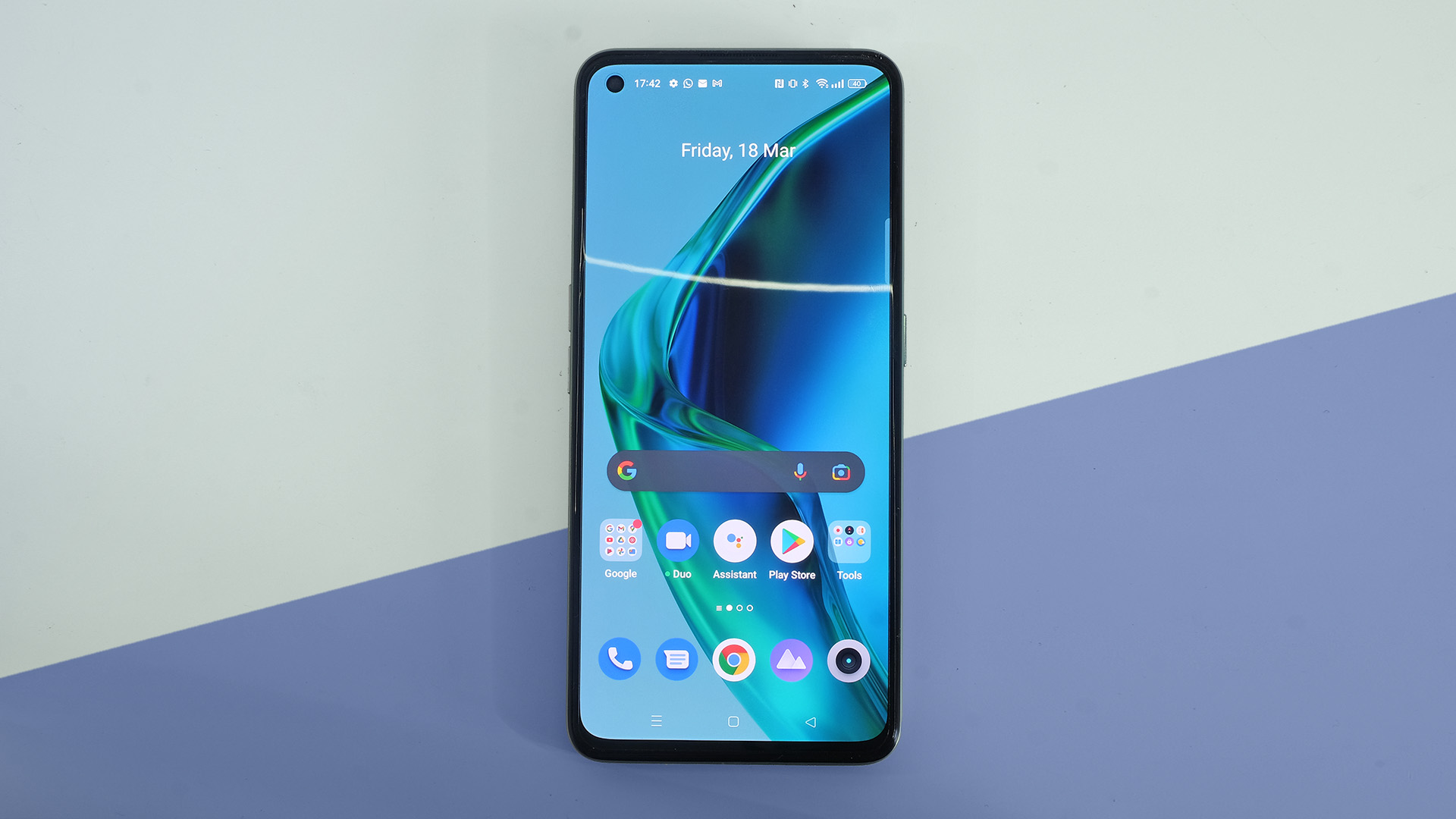
This is a 120Hz screen that can be downclocked to a power-saving 60Hz mode, and there’s an Auto setting that automatically shifts the refresh rate. It doesn’t seem to be particularly dynamic, though, as it can’t lower the refresh rate below 60Hz, according to Android’s own monitoring features.
The Realme GT 2 supports HDR video, and looks great when playing it. There’s even a toggle in the Display settings menu that allows you to max-out brightness with HDR to really show off both the content and the screen.
The display is rated at 1300 nits of peak brightness, similar to the most expensive phones in the world. Realme doesn’t use this kind of power in direct sunlight as it would heat up the phone too much and kill the battery in very little time. However, we were perfectly happy with outdoors visibility, and like the best OLEDs, an automatic “sunlight” mode adjusts color and contrast to maximize visibility in direct sunlight.
Sure, you can spend more on the Realme GT 2 Pro and get an even higher-spec screen, but this one gets you 95% of the way there.
Specs and performance
- Android 12 with RealmeUI
- Good performance
- Some bugs left to fix at launch
The Realme GT 2 runs Android 12 and has a Realme UI 3.0 skin on top. Contrary to what you might expect from an upstart Chinese brand like Realme, the software is largely inoffensive.
It’s clean; there are no pre-installed bloaty Realme apps – just a handful of basic tools like the photo viewer and media player. It does come with Amazon, LinkedIn and booking.com preinstalled, no doubt for a little kickback from these companies, but you can delete these in about 25 seconds. General performance is lovely and smooth, assisted by some nicely tuned, inertia-tinged navigation animations.
This is still a third-party UI, though, and as usual that means there are loads of customizations to be found just under the surface. Unusual things that are easy to access include an ability to change the speed of transition animations and make the keyboard pop up when you enter the app drawer. That’s one for people with massive app libraries.
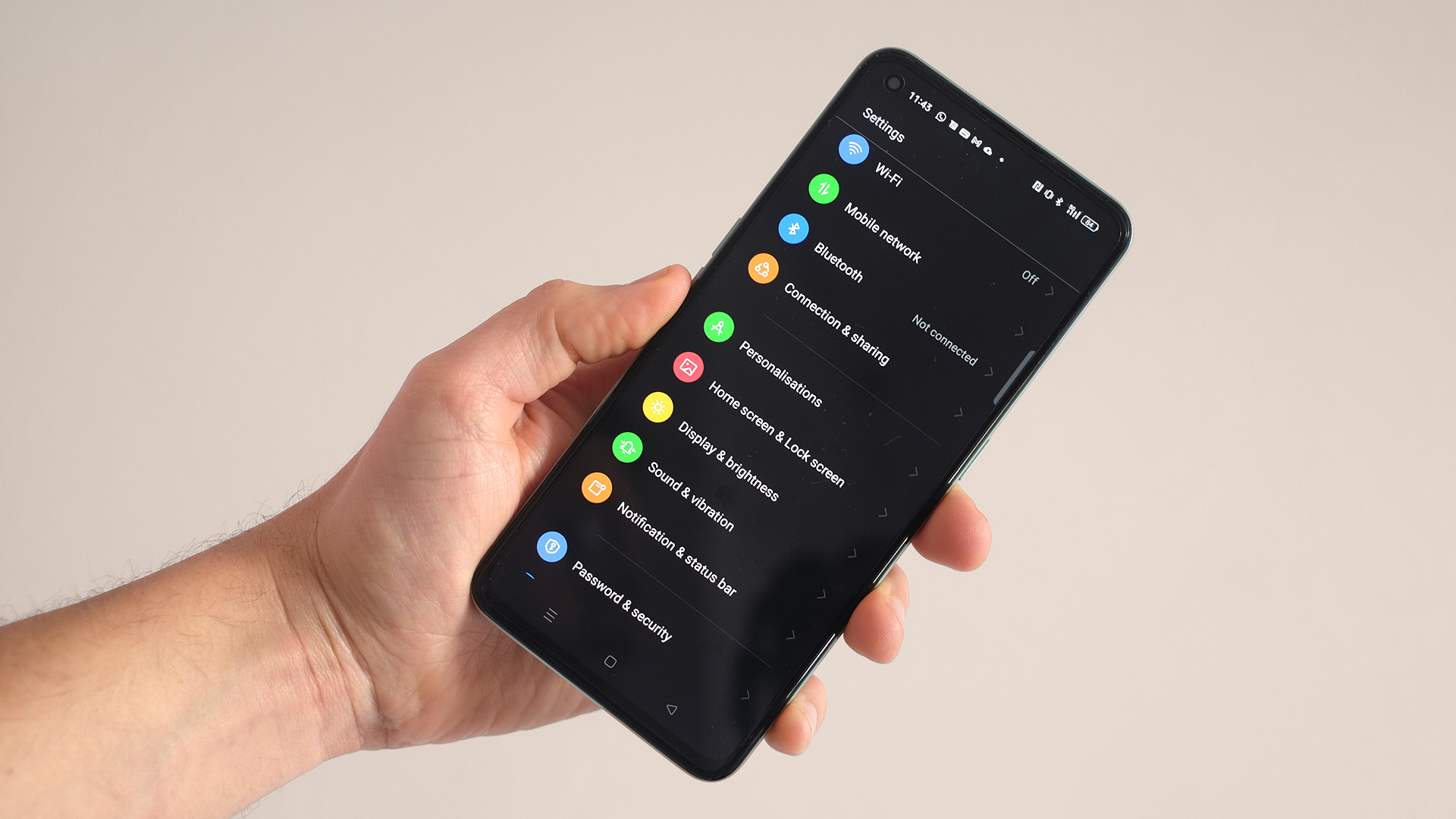
There are just a couple of minor issues. You can choose between Dark and Light interface modes, which make the default background color of the interface either white or off-black. In Dark mode, some text in the notification drop-down is not clear enough. A couple of times, the notification drop-dock was stuck in place, sitting over apps until you manhandled it out of the way.
And software’s always-on display mode does not appear to work — on our Realme GT 2 at least. It never appeared, regardless of the settings we used. There’s nothing a software update or two could not fix here, but the phone, in fact, needs more than a few.
The Realme GT 2 is a seriously powerful phone. It has the Snapdragon 888 processor, Qualcomm’s flagship early-mid 2021 chipset. We love to see mid-range phones use last-generation top-tier CPUs, because they are almost always superior to the latest mid-tier models.
The Realme GT 2 scores 3519 in Geekbench 5, 1133 per core, a result comparable with last-generation flagship phones like the OnePlus 9 Pro. There’s also a GT mode that claims to max-out the phone’s performance at the expense of battery life. In a Geekbench run using this mode, the phone actually scored less in GT mode, proving it is more about taking off any power-saving features you may have switched on, like 60Hz refresh, than a way to actually alter the power ceiling.
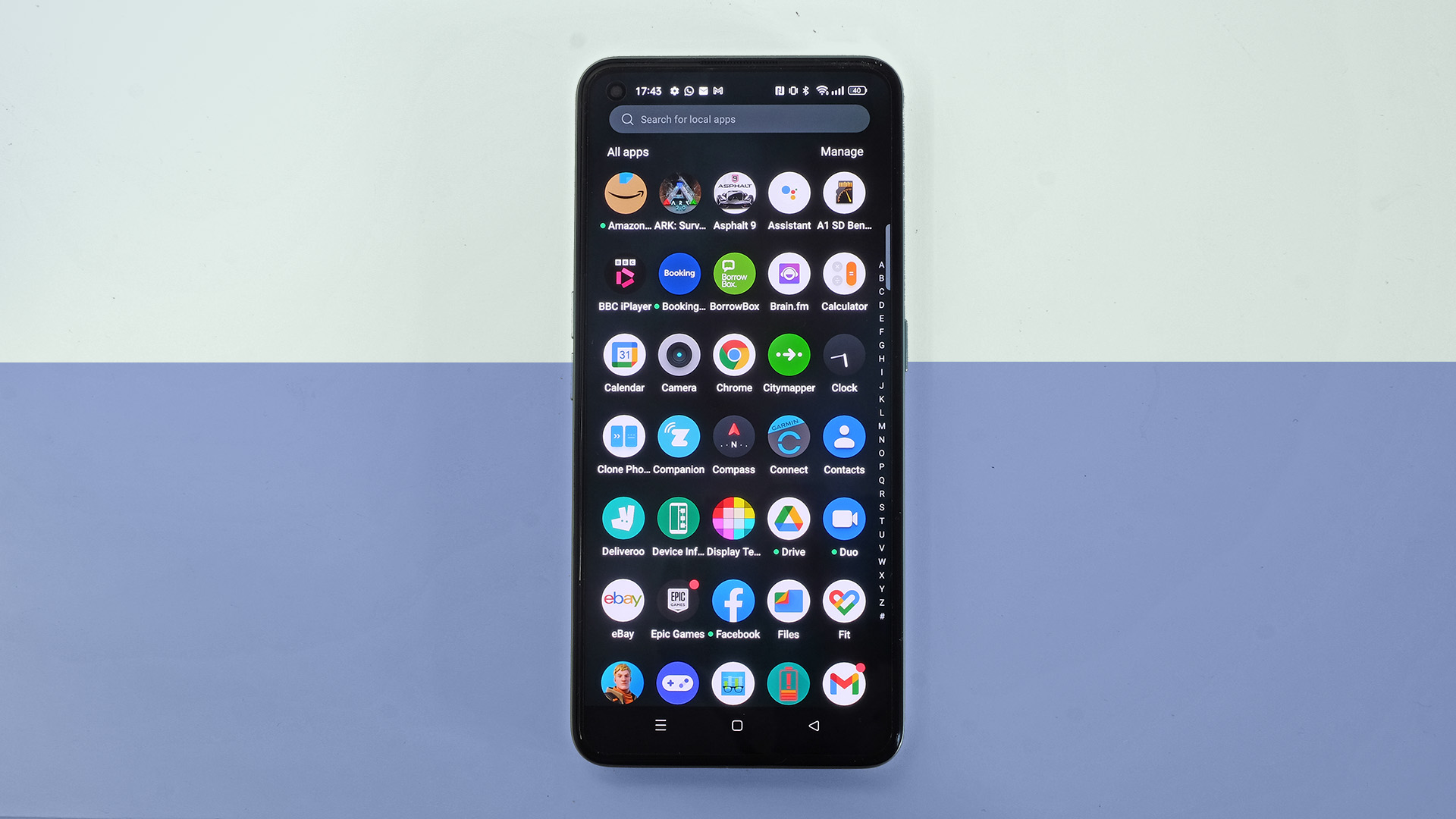
We tried a 3D Mark Wild Life stress test to see if GT mode altered throttling behavior over time. Maximum power dropped to 75% in GT mode, 71% in standard mode: this disparity may be down to the performance mode, but it is not a major one.
With a Snapdragon 888, no such ceiling raise is needed anyway. Games run beautifully on the Realme GT 2. They launch quickly, and tough ones play at noticeably higher frame rates than most cheaper phones that sell at around $350. Fortnite lets you set the max frame rate to 60fps, and while it doesn't always hit this with all graphics settings maxed, it still spends a lot of the time at 60fps.
If you want similar performance but can’t stretch to the GT 2’s price, consider the Realme GT Neo 2. It has a Snapdragon 870 processor, which is also great.
Camera
- Great main camera
- Bad macro camera
- Middling ultra-wide
It’s not raw power that makes the Realme GT 2 stand out for tech fans. It is the high-end CPU matched with high-end camera hardware, even if only one of the three rear cameras actually has it.
The Realme GT 2 has a 50-megapixel primary camera, an 8-megapixel ultra-wide and a 2MP macro that, like all 2MP macros, is bad. Its ultra-wide is not that great either, but the 50-megapixel wide camera is excellent.
It uses the Sony IMX766 sensor and has OIS, optical image stabilization. The same stuff is used in significantly more expensive phones like the Oppo Find X5 Pro, Xiaomi 12 and Honor Magic 4 Pro. It’s a large 1/1.56-inch sensor that is miles better than the 50MP Samsung camera we’ve seen in several cheaper phones recently, like the Xiaomi Redmi Note 11. They may look similar on paper, but they are not.
The Realme GT 2 creates excellent photos in just about any situation, with its primary camera, thanks to its combination of a great sensor, a great ISP and good software processing.
Day-lit shots look clean right down at pixel level. This is a real achievement in a moderately affordable phone that uses pixel binning, where a slightly synthetic or painterly appearance is often a side-effect of the processing involved.
This excellent image integrity means even the 2x zoom mode, purely a digital zoom, produces entirely credible images. These, unlike 1x images, do often have a processed appearance up close. But we have seen worse from actual 2x zoom cameras over the years.
Realme’s Auto HDR enhancement is mostly great, able to balance the priorities of bright skies and darker foregrounds like a pro. It will lose a touch of highlight detail in extreme conditions, like a sunset scene, but judging by how well exposed the foreground typically looks, we’d say this type of contrasting was probably intended. Still, if we had the power to make any changes we wanted, we’d like to see the Realme GT 2 try as hard to retain tough highlight detail as it does to bring out shadow detail.
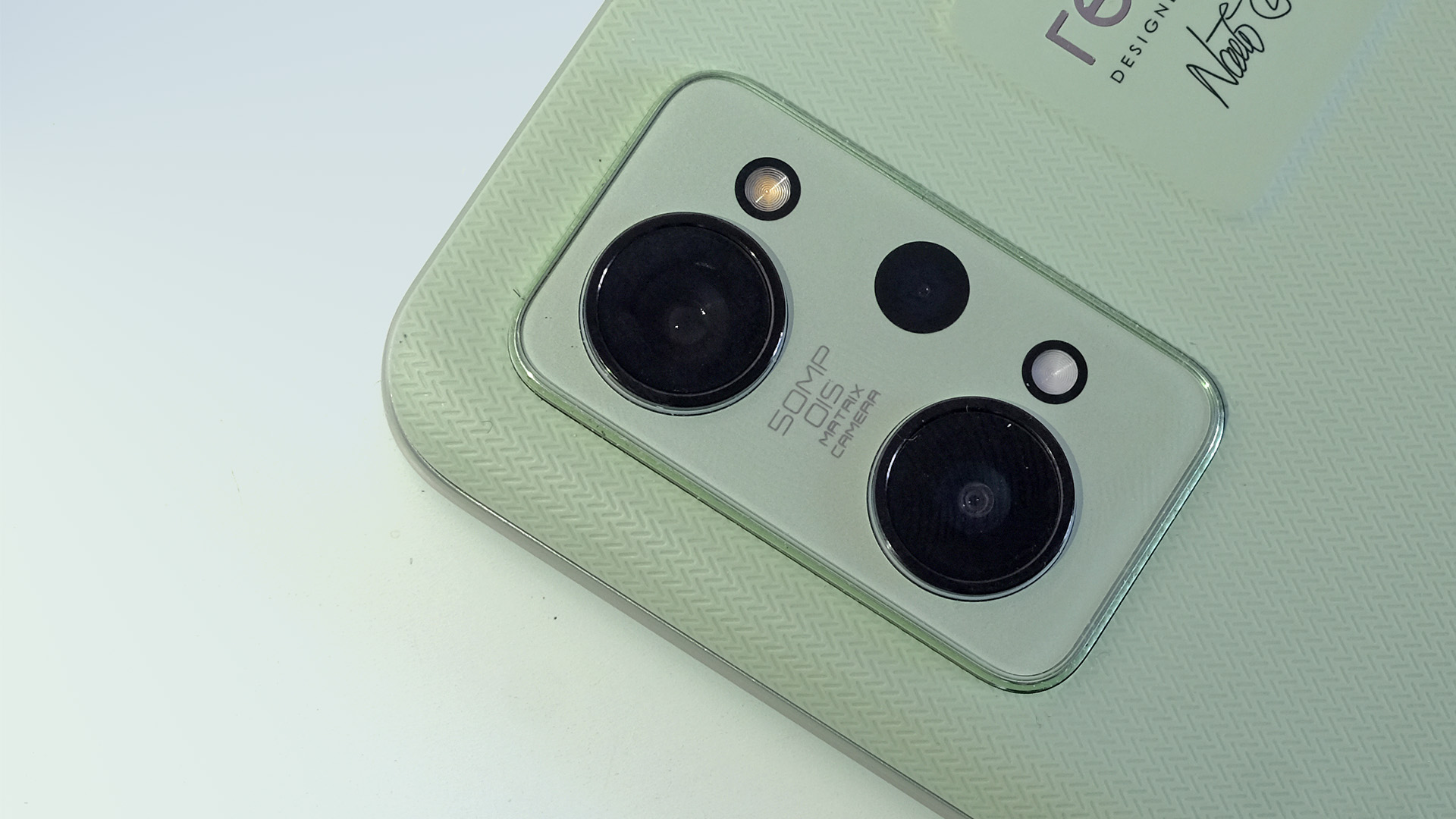
Having reviewed a stack of Realme phones over the last couple of years, we expected to see the Realme GT 2 hype up color excessively. It will appear so if you use one of the bolder display modes. But after transferring the photos to a color calibrated monitor, there’s just a fractional massaging of grass at times — making the grass appear too green in some images.
The aforementioned images were results of shooting in the standard mode — enable “AI” mode and all bets are off. Color fidelity isn’t the goal with AI mode, and images taken in this mode are quite shareable since they really jump off a phone’s screen.
Night image quality is excellent for a phone at the Realme GT 2’s price. There’s a dedicated night mode that takes around two seconds to capture an image – but even the standard and 50MP modes can deliver great results. This is a demo of how much heavy lifting OIS and a good quality sensor can do.
At times, these non-night-mode images can actually look better, letting night skies appear black; in contrast, the computational night mode always tries to bring out tonal gradations and color in the sky where possible.
Shots taken in dingy indoor lighting also look good. The Realme GT 2 retains a good amount of detail with an acceptable level of noise at ISO 2000, a fairly high sensitivity setting.
This phone makes taking good photos a breeze. Our hit rate was unusually high with the Realme GT 2. And the problems?
Aside from Auto HDR’s tendency to favor shadow detail over highlight retention, the lens does routinely cause one or two tiny little green discs to appear in your photos when you shoot directly into the sun. For the first few days of testing we had some major focusing problems with the 2x zoom mode, but these issues seemed to have largely cleared up on their own, even without any software update.
The ultra-wide camera is also not a patch on the main 50MP camera. While it benefits from the phone’s sound image processing, making your photos look good from a distance, you can see the flaws outside the center of the frame on closer inspection.
The ultra-wide uses an 8MP Omnivision camera, also seen in the cheaper Realme 9 Pro Plus. The 9 Pro Plus is a phone well worth considering if you are not wedded to the Realme GT 2's high-end performance, since the former appears to have the same rear camera array.
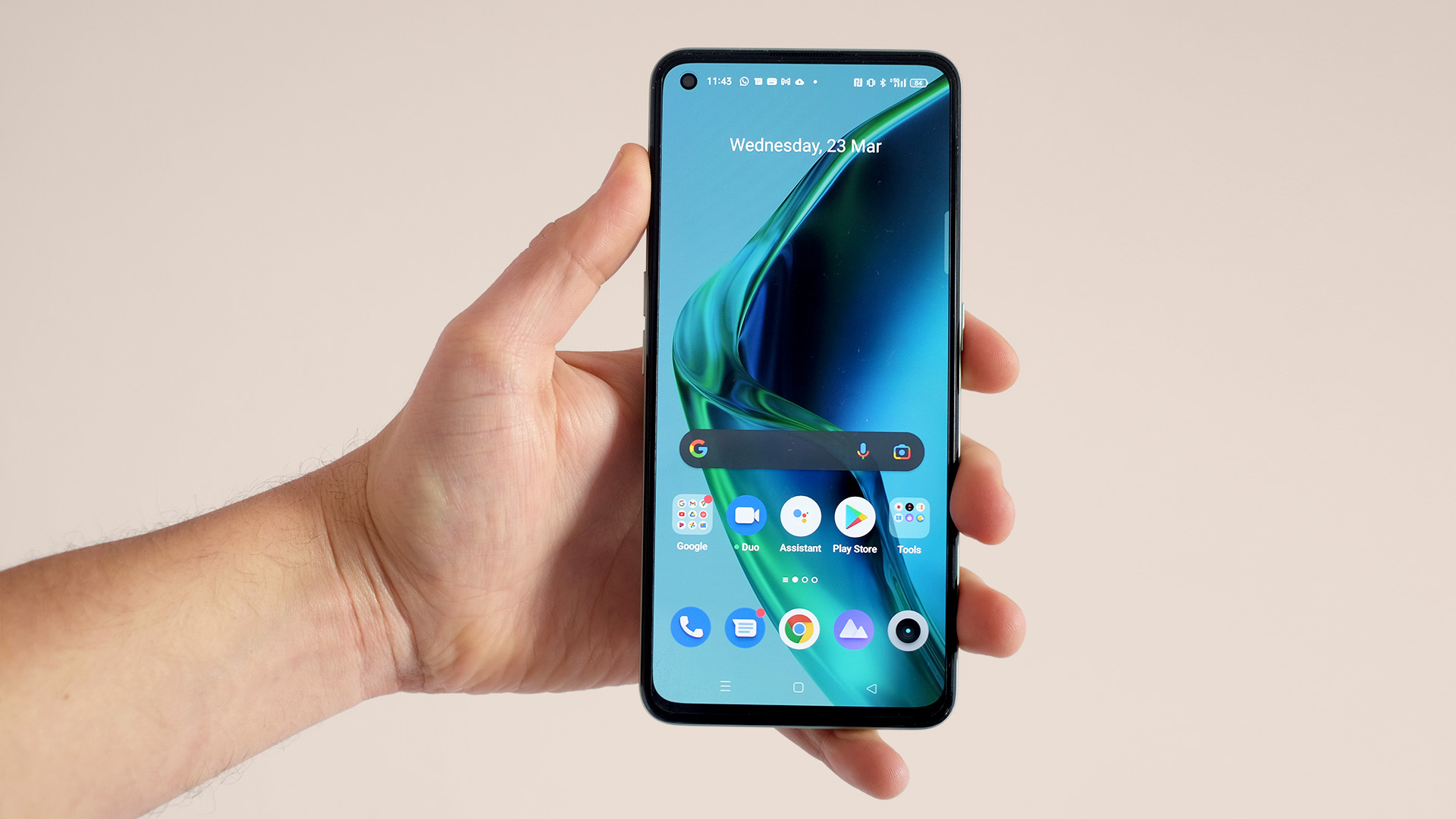
Video features are decent as well. The Realme GT 2 can shoot stabilized video at up to 4K resolution, 60 frames per second. Footage is clean, motion is smooth and the image is detailed. It will even have a crack at ultra-low-light video, at 1080p resolution.
While you’re not going to make a masterpiece with this footage, it does have significantly better dynamic range than 4K shooting, suggesting it may use the sensor’s DOL-HDR capability. It easily beats what you’d get out of a GoPro Hero 10 Black in very bad lighting.
The Realme GT 2 also has a very solid selfie camera, powered by a Sony IMX471 sensor. Selfies have a lot of detail in good lighting, and the pixel binning hardware lets them hold a basic level of detail well in poor light.
There’s extensive use of HDR in selfies when you’re backlit. And the Portrait mode blurs out the background for an easy creative/DSLR style look.
Camera samples


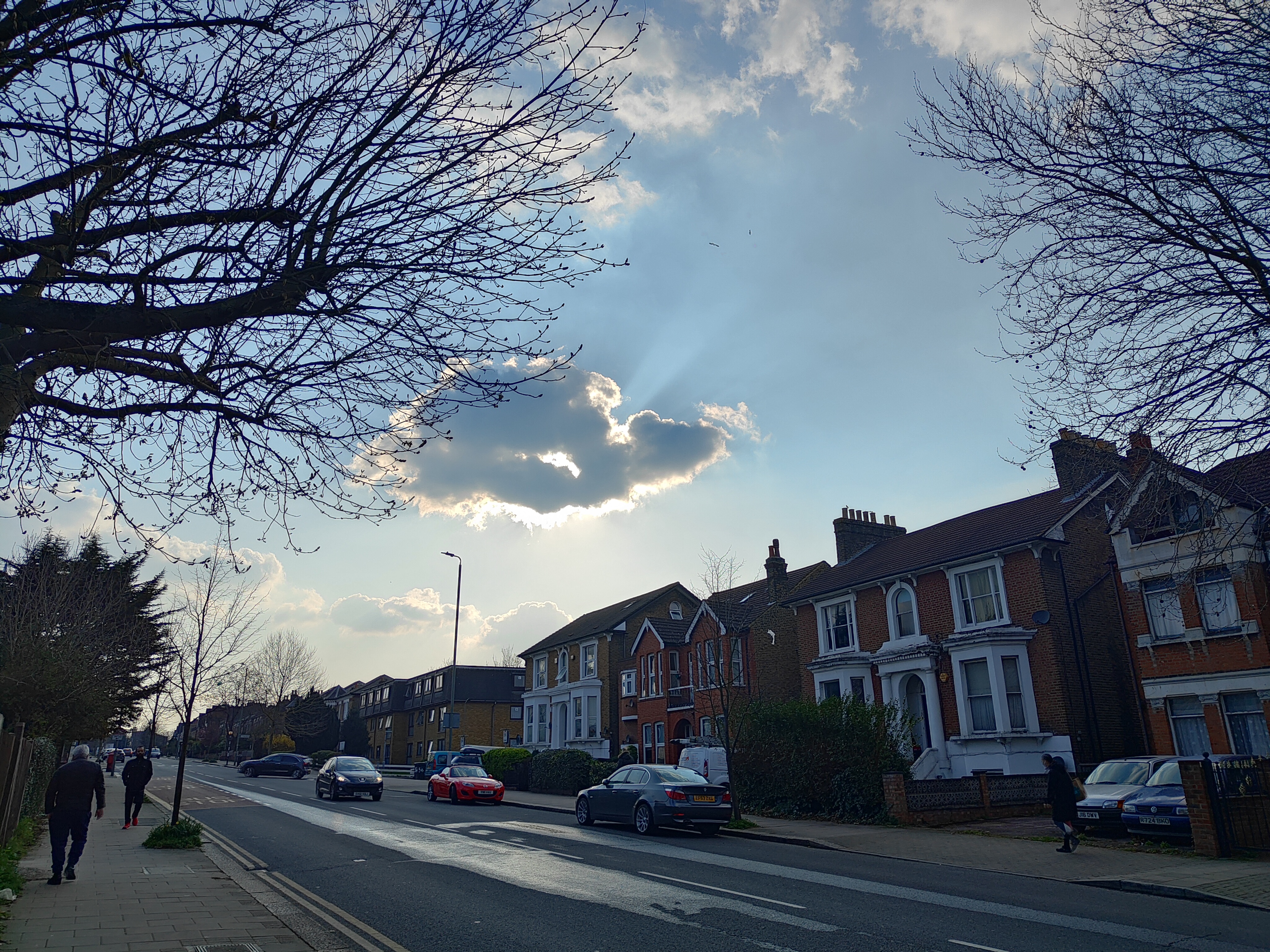


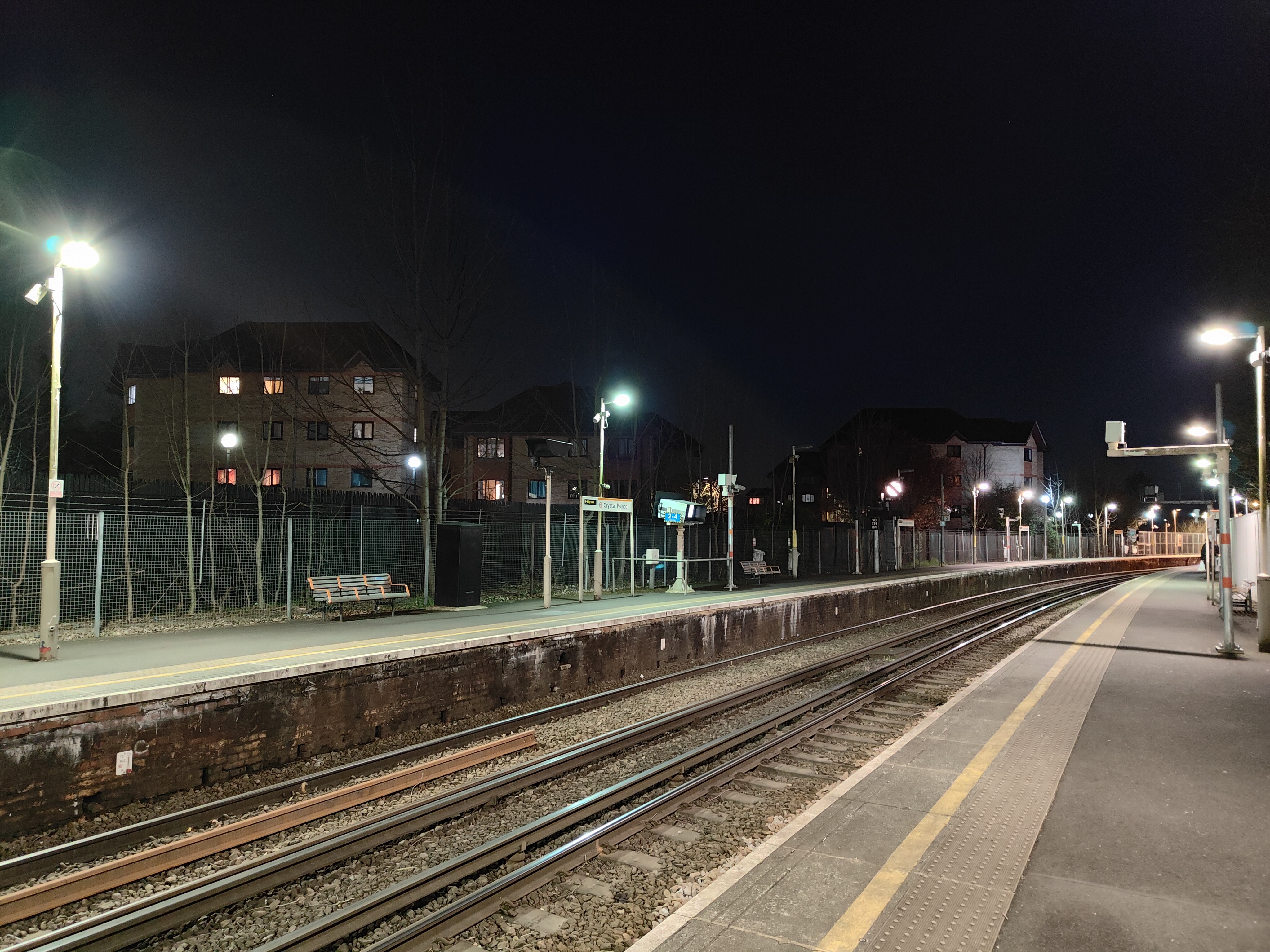
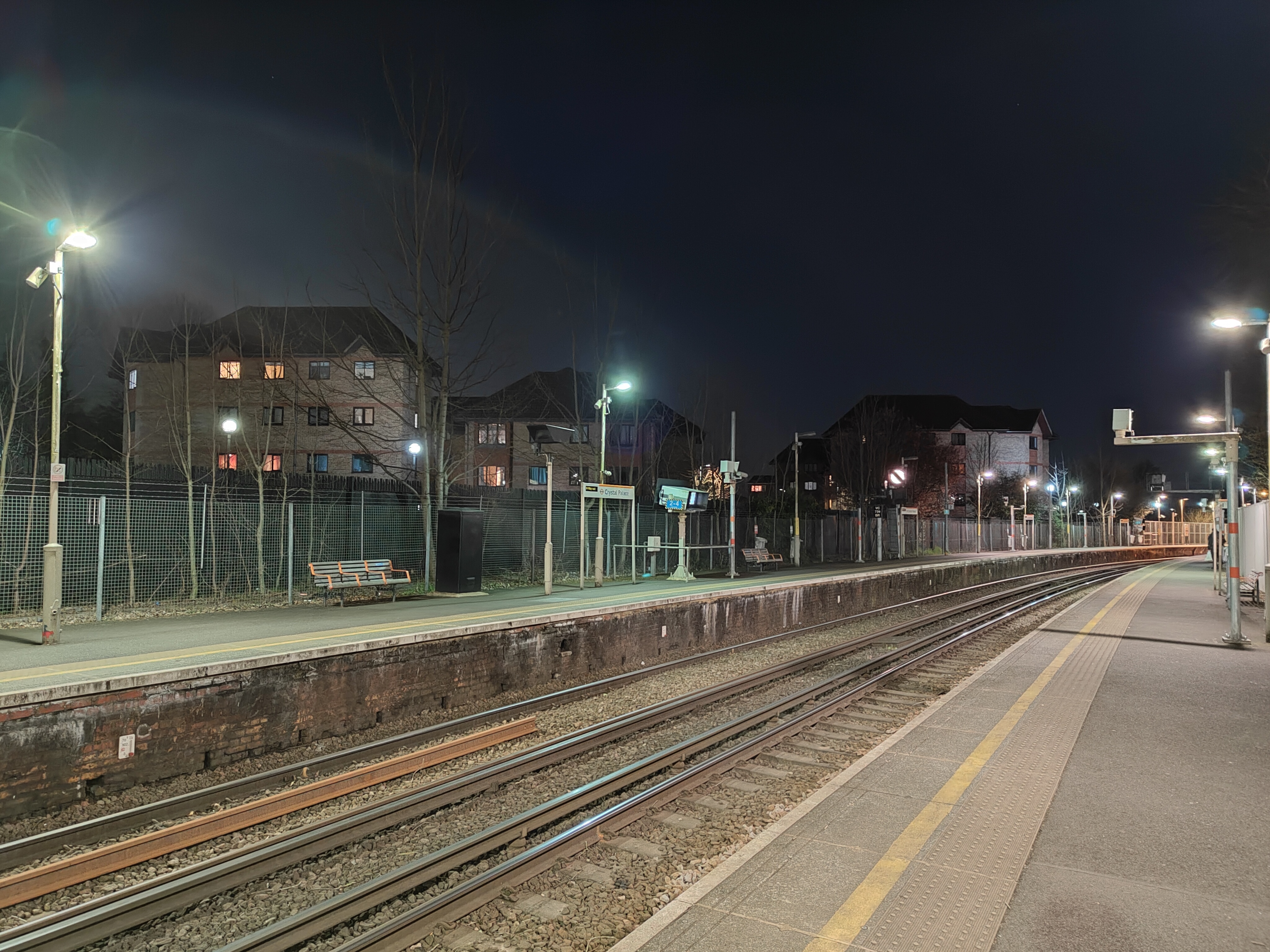
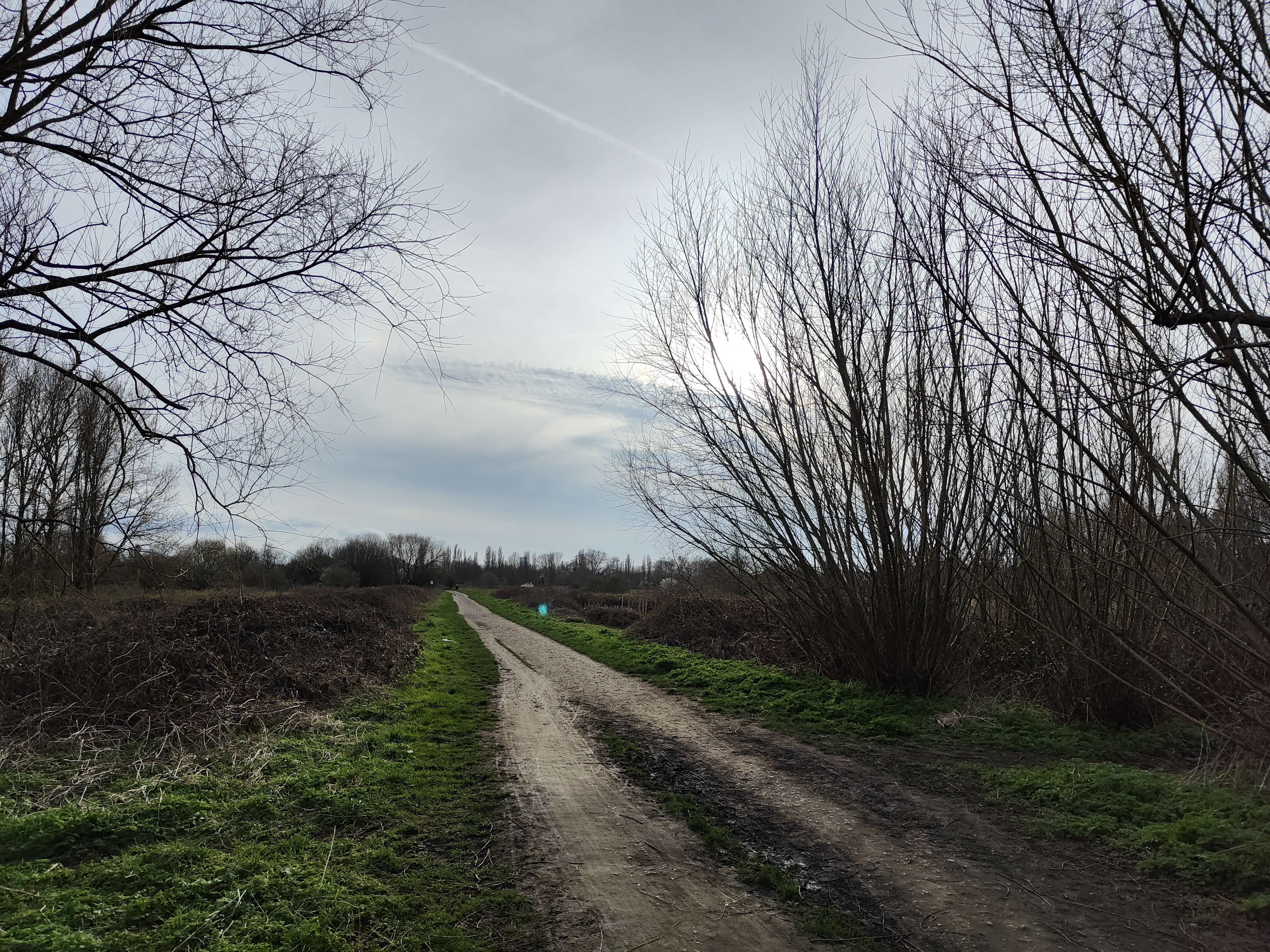
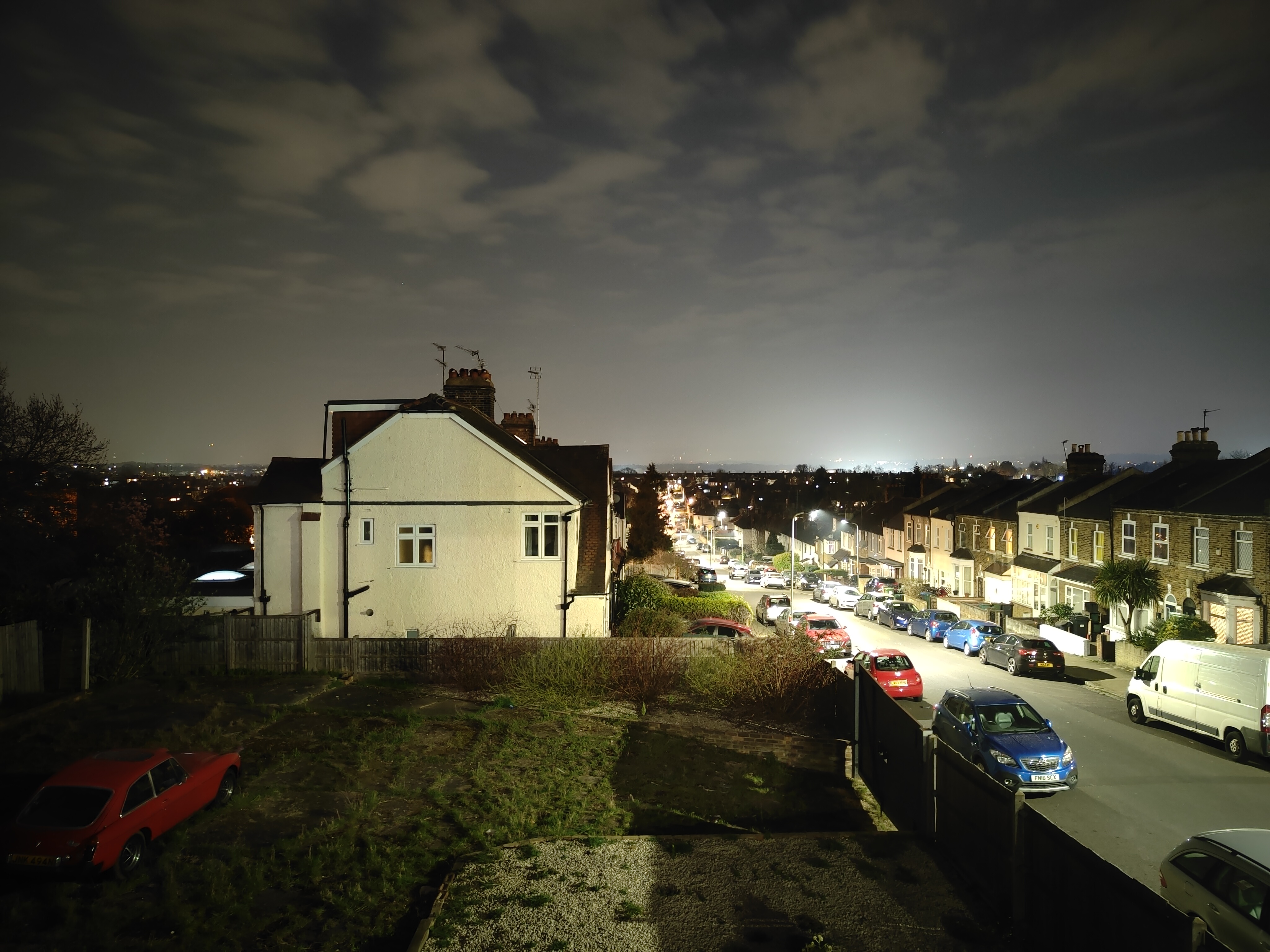
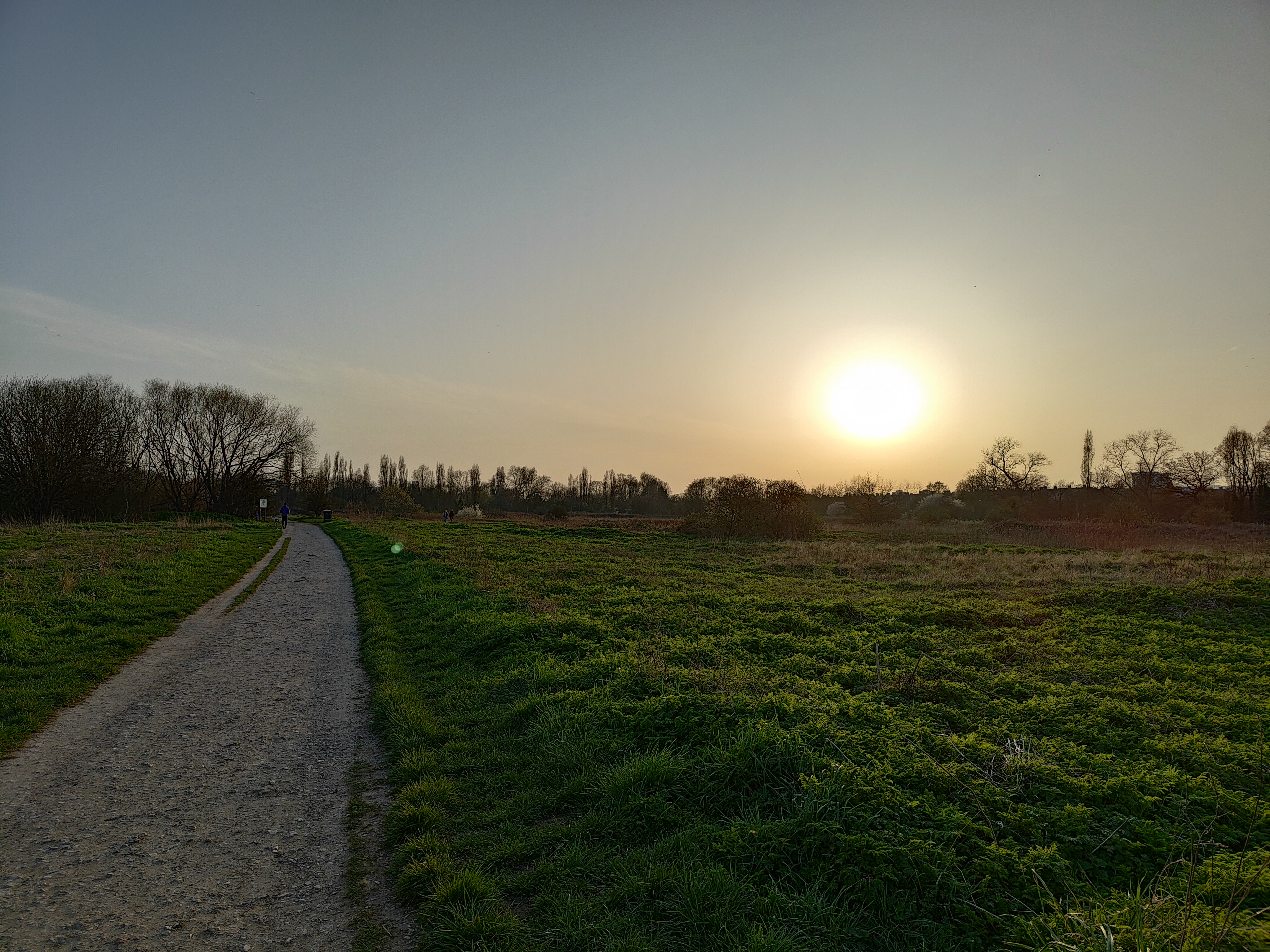
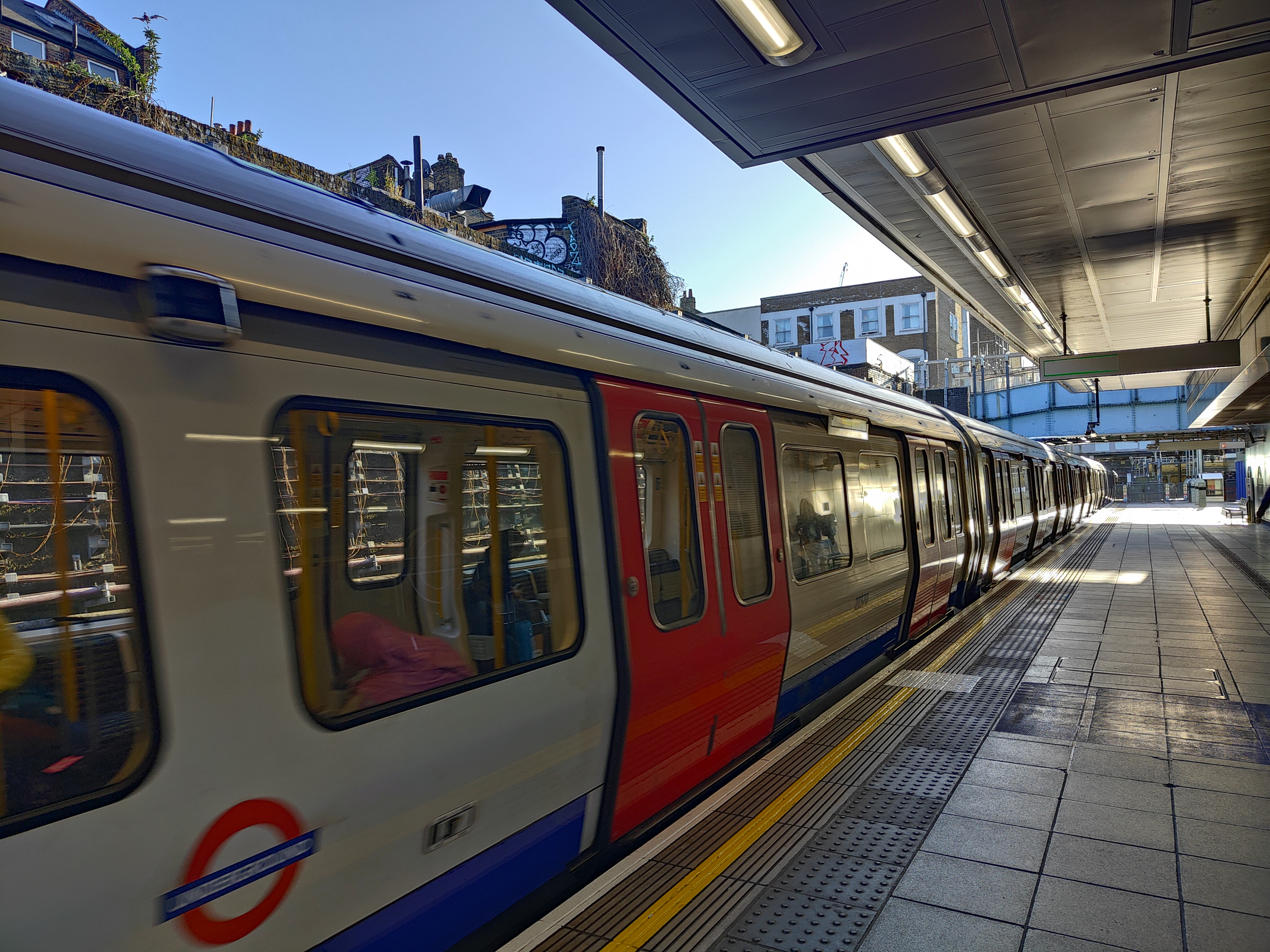
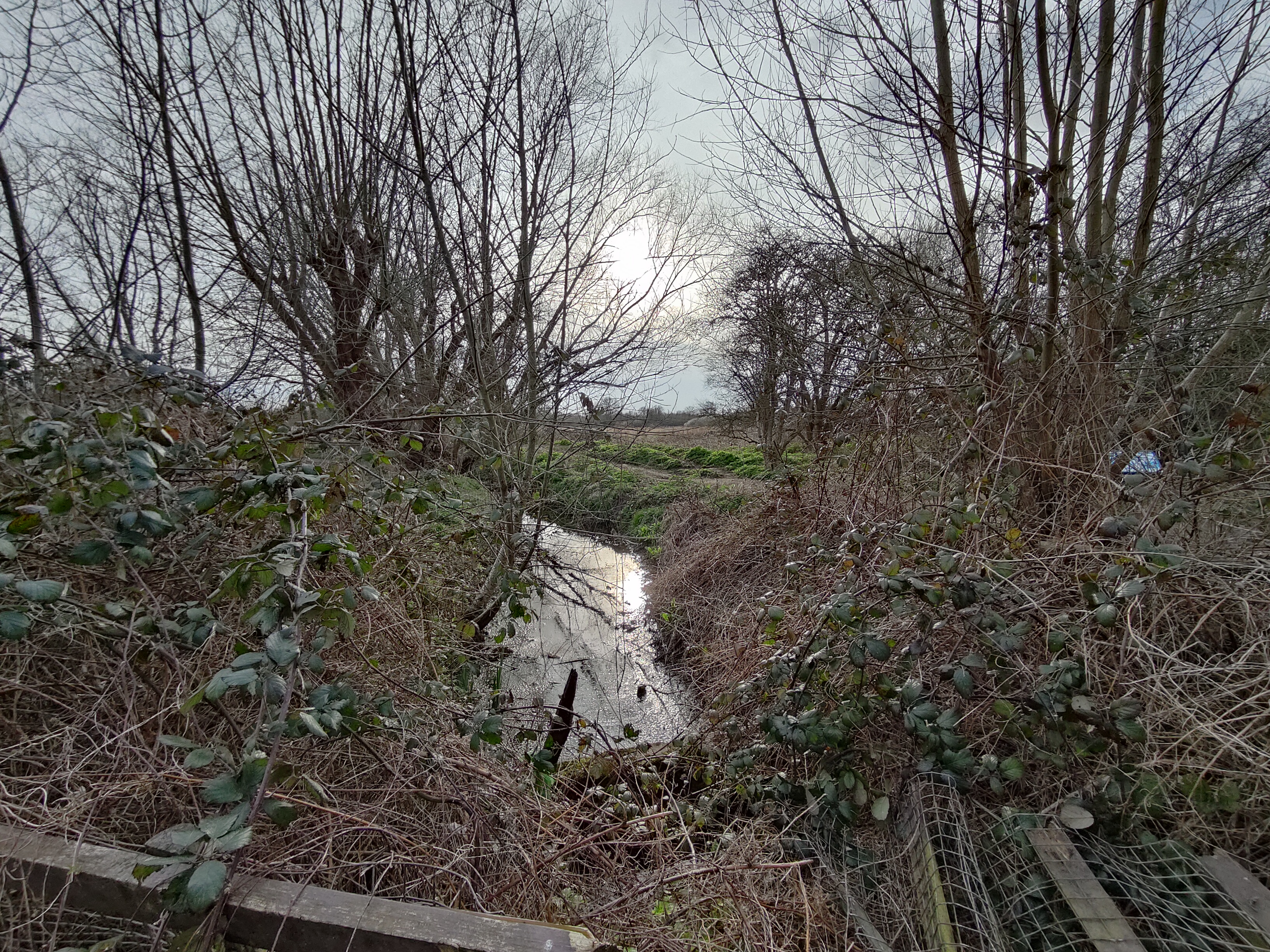


Battery life
- Unremarkable battery life in its 120hz display mode
- Better longevity at 60Hz
- Fast 65W charging
The Realme GT 2 has a 5,000mAh battery with snappy 65W fast charging. It takes you from flat to full in 43 minutes according to our testing, and reaches 89% in 30 minutes.
You may need to lean on this fast charging because battery life is not that hot, particularly in the 120Hz or Auto display modes. While the Realme GT 2 can get through a moderate day of use, we just didn’t find we had all that much charge left by plug-in time. And if we were to take it on a night out, we’d definitely give it a top-up before leaving home.
The good news, of course, is that a 10-minute charge should easily be enough for this.
Stamina does seem to improve if you switch to the Realme GT 2’s 60Hz display mode, letting you see about 30% charge left by bed time. Scrolling does not look anywhere near as smooth at 60Hz, but strategic use of this mode is sensible if you’re not always going to have access to a charge point.
There’s no wireless charging here, but that is no surprise in a phone where the budget has clearly been allocated very carefully.
Should you buy the Realme GT 2?
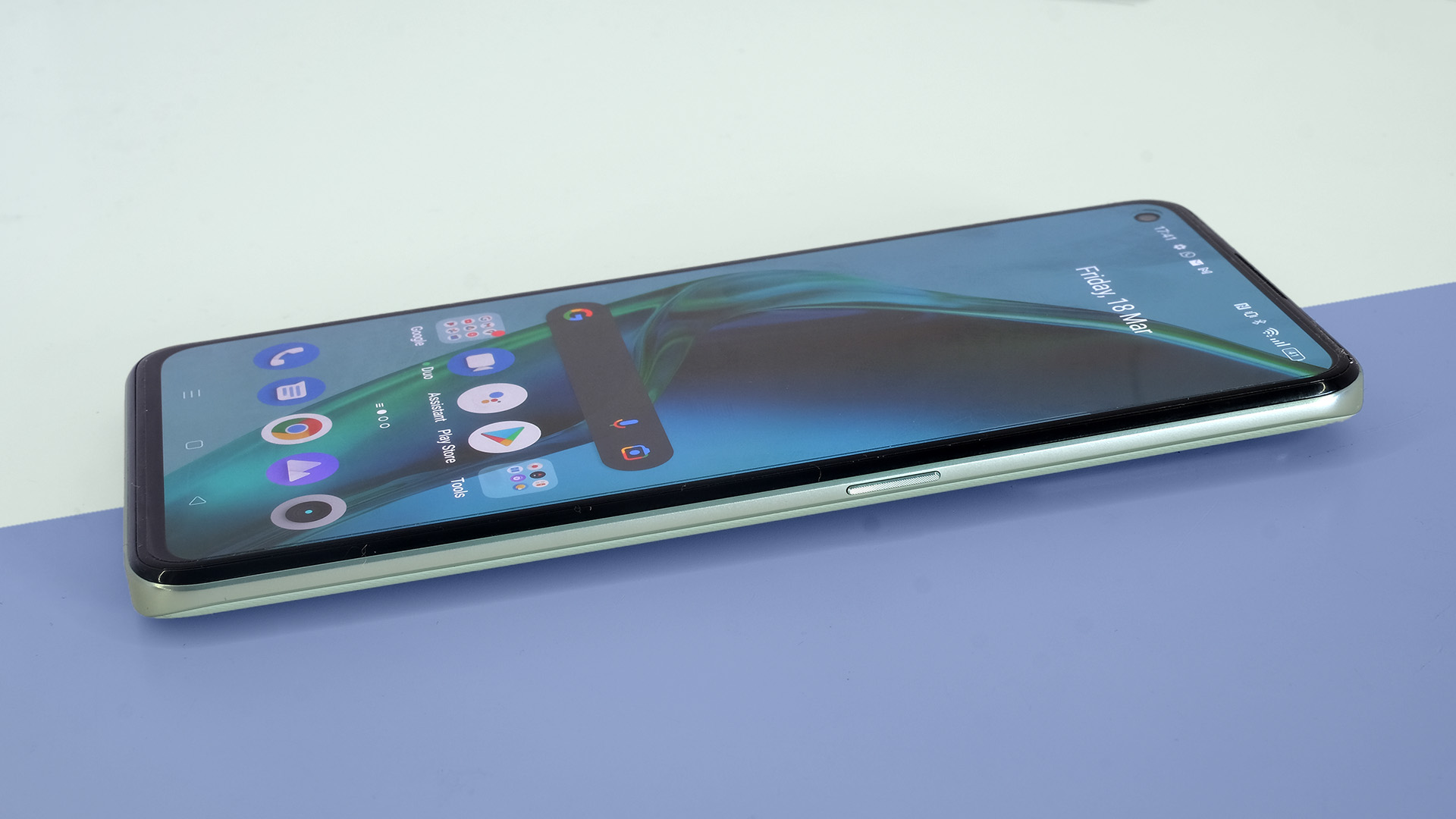
Buy it if...
You want power on a budget
The Realme GT 2 is one of the most affordable phones with a true top-end processor. Yes, the Snapdragon 888 is aging a bit – and the original Realme GT had the same chipset – but this phone is still a powerhouse. Games run well, as does Android 12.
You want to take top-tier photos
Realme’s GT 2 also beats the original Realme GT in camera quality. Its 50MP Sony IMX766 is a real trooper that can take flagship-grade pictures; it will only occasionally let you down because of its tendency to allow some overexposure in extreme conditions.
You want a stylish handset
This is one of Realme’s best-looking phones, with an underlying style closer to something we’d expect from sister brand OnePlus. The designer’s signature plate is a bit… unusual, but it’s absent from the Steel Black version.
Don't buy it if...
You want a long-lasting battery
The Realme GT 2 is not a battery life star, despite having good 5,000mAh capacity. Its stamina when run at its 120Hz display mode (or auto switching) is just okay, leaving you with a little buffer for those particularly heavy days – or nights out. There are ways to improve this, of course, like the battery saver mode and dropping to 60Hz, but to see the phone at its best you will have to rely on charge top-ups a bit.
You want more than one good lens
While camera quality is a highlight here, it’s only thanks to the Realme GT 2’s primary camera. Its ultra-wide is nothing special and the macro is rubbish. For a step-up camera all-round, consider an upgrade to the Realme GT 2 Pro. Its starting price is higher but it still represents good value.
You care about wireless charging
The Realme GT 2 does not have wireless charging, which may be important to some. It’s a reminder there are always some features left out in a phone like this: Androids that offer some, but not all, aspects of a top-tier phone.
First reviewed: March 2022
Andrew is a freelance journalist and has been writing and editing for some of the UK's top tech and lifestyle publications including TrustedReviews, Stuff, T3, TechRadar, Lifehacker and others.
